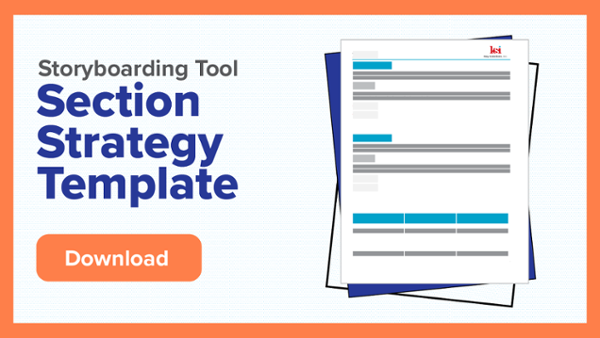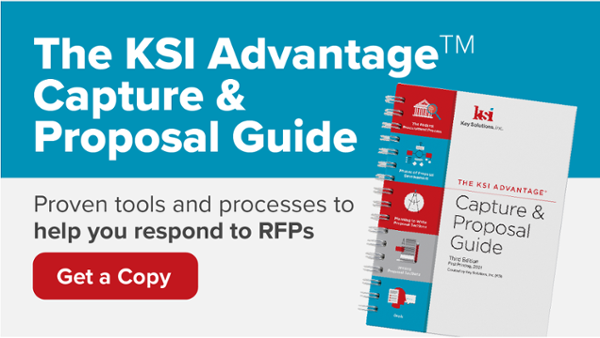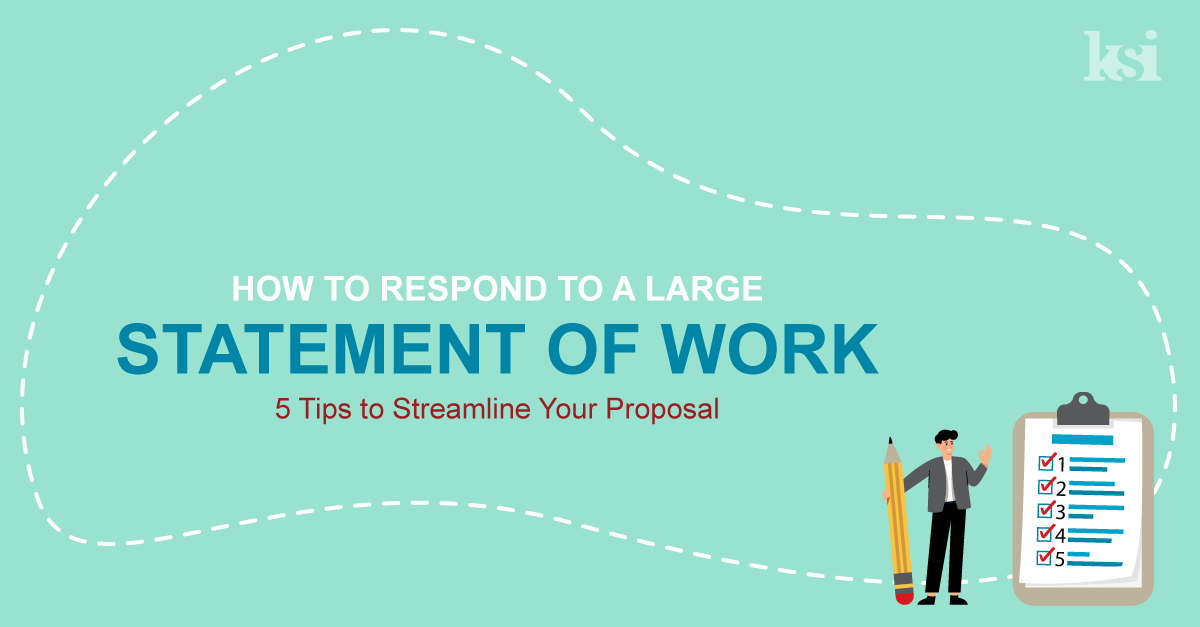We know that Evaluators evaluate and score submitted proposals. Therefore, as bidders looking to win work, we should aim to make the evaluators’ jobs as painless as possible.
Here are four easy ways to make your proposal narrative more evaluator-friendly:
- Use Headings to Guide Evaluators
- Employ Theme Statements Strategically
- Leverage Feature and Benefit Tables Consistently
- Highlight Proof Points Using Callout Boxes
1. Use Headings to Guide Evaluators.
Compliance is the first thing evaluators will look for. To make compliance clear, structure your response to the Proposal Instructions (typically Section L) and the Evaluation Criteria (typically Section M). Next map to other requirements, as required.
For example, in technical sections, it may be necessary to map to certain Statement of Work (SOW) areas (typically Section C). To facilitate the evaluation further, consider including relevant Request for Proposal (RFP) references in your section heading titles (e.g., 2.0 Staffing Approach [L.2, M.2, C.3.1]).
2. Employ Theme Statements Strategically.
Theme statements set the stage for the section and grab the evaluator’s attention because they address an issue that is important to the customer.
The ideal theme statement not only presents a solution feature that addresses a customer hot button, it also articulates clear, quantified benefits. I recommend including a theme statement for every first-level section and second-level subsection and formatting those themes to stand out from the rest of the text. If you theme effectively, the theme statements will show up as identified strengths in the evaluation debrief from the customer.
3. Leverage Feature and Benefit Tables Consistently.
Feature and benefit tables are another great way to help evaluators find proposal strengths. Similar to theme statements, feature and benefit tables highlight major solution features—that ideally address customer hot buttons—and articulate clear quantified benefits. Typically, customers want things cheaper, faster, and/or better, which we might express as low cost, low risk, high quality, efficient, and/or effective.
Use feature and benefit tables in each major section introduction to highlight the key elements of your approach. This could be every first-level section for shorter proposals, but may be extended to each second-level subsection for longer proposals.
4. Highlight Key Proof Points Using Callout Boxes.
Substantiate all claims with proof points and metrics, which you should quantify if possible. Using callout boxes will help your major proof points stand out for the evaluators. To make proof points even more effective, make sure to provide the “so what?” statement.
For example, it’s not enough simply to state: We have used our proven staffing process to staff programs with 3-, 7- and 14-day turnaround times, including the MNOP program, where we staffed 15 FTEs in two weeks.
Ask yourself, “So what? What does this mean for my customer?”
This might prompt you to add, Leveraging this staffing process, we provide Customer ABC with low-risk task order start-up and delivery for large, small, short-term, and long-term requirements.
CONCLUSION:
I have found these strategies extremely effective in supporting high-scoring and winning proposal responses. Use these four simple components to help facilitate the evaluation process and increase your overall score.
And of course, a higher score can easily translate to a higher probability of win!
This article was originally published by Ashley Kayes on Proposal Reflections.









